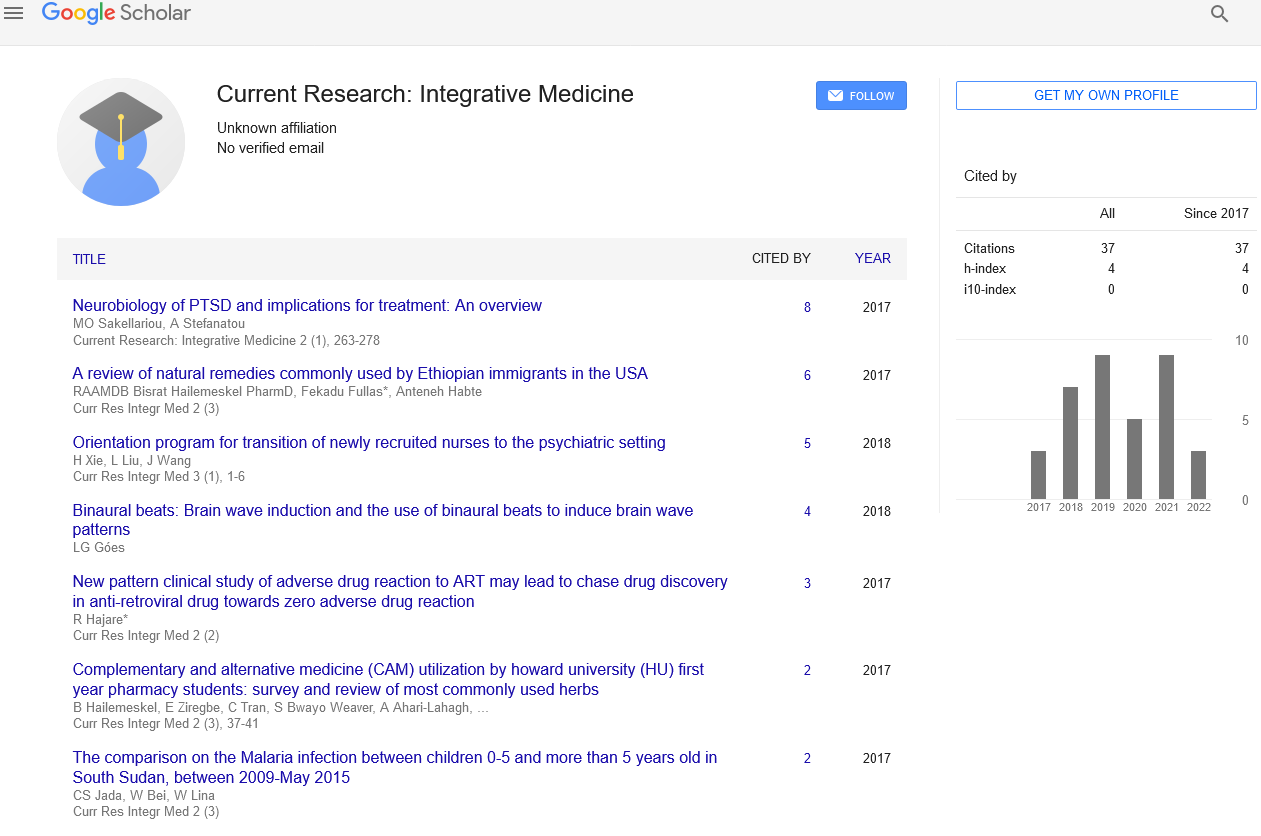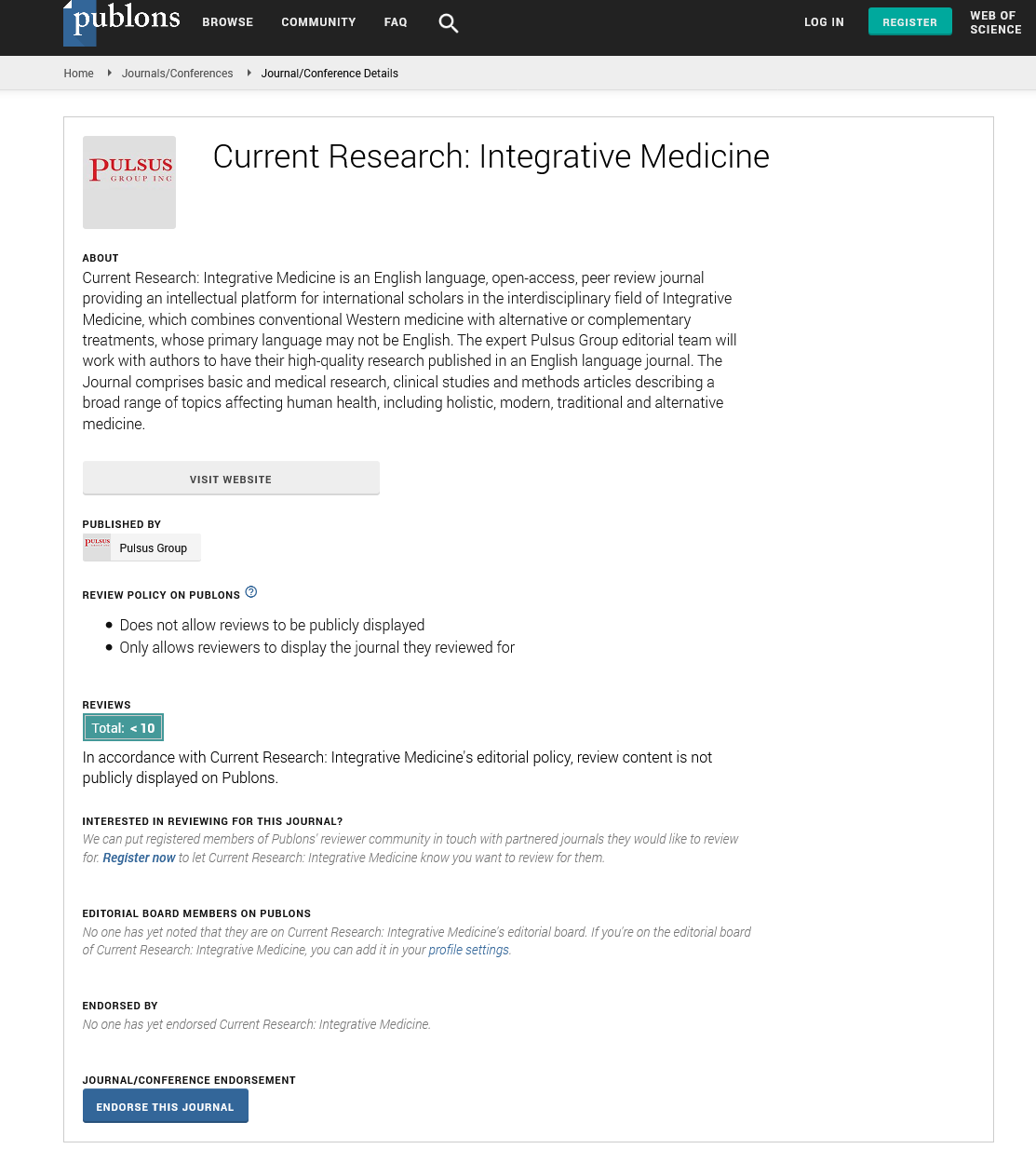Immunotherapy to control prostate cancer: trials, tribulations and new hope
2 University of Pittsburgh, Immunology and Bioengineering, Pittsburgh, USA, Email: michael.lotze@gmail.com
Received: 31-Jul-2017 Accepted Date: Aug 01, 2017; Published: 22-Aug-2017
Citation: Salup RR, Lotze MT Immunotherapy to control prostate cancer: trials, tribulations and new hope. Can Res Metastasis 2017;1(1):1-2.
This open-access article is distributed under the terms of the Creative Commons Attribution Non-Commercial License (CC BY-NC) (http://creativecommons.org/licenses/by-nc/4.0/), which permits reuse, distribution and reproduction of the article, provided that the original work is properly cited and the reuse is restricted to noncommercial purposes. For commercial reuse, contact reprints@pulsus.com
Abstract
For clinicians and patients with a history of effectively treated prostate cancer (PC) alike, it is very sobering to observe the occurrence of metastases 15 years or later following successful definitive therapy, confirmed by absence of demonstrable tumor marker positivity for many years (1). Why is this happening and could it be prevented or controlled? Perhaps the answer may come from a deeper understanding of immunity to PC and possible emergent immunotherapy (IT). Recent, encouraging advances in cancer IT as well as other biological approaches herald a new dawn in oncology enabled in part by inception of the new Open Access Journal of Cancer & Metastasis Research.
Description
For clinicians and patients with a history of effectively treated prostate cancer (PC) alike, it is very sobering to observe the occurrence of metastases 15 years or later following successful definitive therapy, confirmed by absence of demonstrable tumor marker positivity for many years [1]. Why is this happening and could it be prevented or controlled? Perhaps the answer may come from a deeper understanding of immunity to PC and possible emergent immunotherapy (IT). Recent, encouraging advances in cancer IT as well as other biological approaches herald a new dawn in oncology enabled in part by inception of the new Open Access Journal of Cancer & Metastasis Research.
Broad-based prostate-specific antigen (PSA) screening started over 25 years ago, leading to the diagnosis and treatment of early stage disease, with a subsequent drop in disease-specific mortality to around 28000 Americans within the following decade. Sadly, this number has remained stagnant since then [2]. Cumulative evidence that well-differentiated, low volume PC (lowrisk), representing less than half of these tumors, may be safely managed conservatively for 10 or even 20 years, raises questions regarding the biological differences between low-risk tumors and the significant intermediate- or high-risk PC types. With an increasing population of aging males, most with a life expectancy of well over 15 years, there is great urgency to find a better approach to PC. These men hope for new solutions to diagnosed disease. Possible strategies include the following: [1] prevention of disease, [2] earliest possible diagnosis of significant tumors combined with more effective and less toxic therapy, [3] prevention of relapse following successful therapy of early stage disease, [4] control of metastases so that other factors limit life and not the tumor. Here we highlight potential opportunities and limitations associated with them:
[1] Prostate cancer clinical prevention efforts. Using oral 5-alpha reductase inhibitors (5ARI) to target the androgen receptor (AR) pathway in the PCPT and REDUCE trials, resulted only in a 25% PC risk reduction [3,4]. The SELECT chemoprevention trial showed that selenium and/or vitamin E supplementation cannot prevent PC [5]. In a population-based case-control study a 44% risk reduction of PC incidence was observed in Caucasian/white men on metformin therapy [6]. This has not been tested in a prospective randomized placebo controlled trial (PRPCT). Metformin is an indirect autophagy promoter [7], enabling clearance of effete organelles and DNA damage. Autophagy is an important promoter of anti-tumor immunity [8,9] but may also enhance growth of PC [10]. Inhibiting autophagy in PC may enhance the potential of IT strategies in this disease by limiting survival of tumor cells promoted by reparative signals in the tumor microenvironment. Various dietary and nutritional supplements (isoflavones from soy, green tea, coffee, lycopene) and aspirin intake, correlate with a lower PC incidence. Vitamin D supplementation surprisingly appears to increase PC risk (contrary to prior reports). These observations have not been confirmed in PRPCT. Hence, as of 2017 effective PC prevention appears unrealized.
[2] Large-scale PSA-based screening. Although now limited, this can detect virtually all PC cases at a very early clinical stage. It exposes many men without PC, however, to risks of prostate biopsies, detecting men with low-risk tumors of no long-term clinical significance for up to two decades but also detects, enabling provision of therapy for a majority of men with potentially lethal PC. It is also indicated in men with a pedigree of hereditary or familial PC as well as racial risk factors because of their earlier disease onset age. Thankfully, many new diagnostic molecular diagnostics have lately been introduced to clinical application, allowing better screening and diagnose men with significant PC as well as help guide their therapies. The current standard of care treatment for men with early stage PC consists of either surgical or radiation whole-gland therapy, in some cases combined with temporary systemic androgen deprivation therapy (ADT). Other forms of whole gland therapy are cryotherapy or high-frequency ultrasound – HIFU. Whole gland PC therapies have significant toxicities, and a negative impact on these patients’ quality of life. Focal PC ablative therapy clinical trials are currently ongoing at various centers but long-term results are lacking. While 25 years after definitive whole-gland therapy PC-free survival of 75% is encouraging, this may not reassure the newly diagnosed PC patient diagnosed at age 50 or younger, especially considering the potential for metastatic relapse 15 years or longer following successful definitive therapy, in spite of absence of a detectable serum PSA relapse for many years [1]. Hence prevention of relapse, possibly by applying IT is of great clinical importance.
[3] Mortality is the result of metastatic disease arising from residual, dormant disseminated tumor cells (DTC) in their bone marrow. DTC in the bone marrow have been observed in 63% of PC survivors without clinical evidence of disease [11]. These DTC may include dormant PC stem cells. A comparative analysis of dormant tumor cells and cancer stem cells is difficult, because cancer stem cells could become dormant but not all DTC exhibit markers of cancer stem cells. Circulating tumor cells (CTC) can also be measured in the blood of relapsing PC patients, using an FDA-approved detection test. Immune-mediated tumor dormancy has been suggested to be the major mechanism for keeping residual tumor cells in check following cancer therapy [12,13]. Natural killer (NK) cells can eradicate DTC that resist T-cell-mediated lysis [14]. The imminent FDA approval of ex vivo expanded, patient-derived, autologous T cells, engineered to express chimeric antigen receptors (CAR) based on 82% complete response (CR) in patient with B cell lymphoma and in children with acute lymphoblastic leukemia [15], suggests that the era of cell therapy has begun. Similarly, durable responses in 50% of patients with metastatic melanoma using autologous tumor infiltrating lymphocytes (TIL) [16,17] suggest that other IT strategy may be able to prolong tumor dormancy and offer durable prevention of clinical tumor relapse in PC patients following definitive therapy for early stage disease.
[4] The current standard systemic therapy for metastatic PC consists of ADT, supplemented by systemic chemotherapy (docetaxel). In some patients, this results in an initial high response rate but a median survival of only 4 years [18]. In the last few years, second-line ADT agents (abiraterone, enzalutamide) as well as chemotherapy (cabazitaxel) and a skeletal metastasis targeting radionuclide (alpharidin), have received FDA approval. Interestingly, in 2010 the FDA also approved the first autologous cellular cancer vaccine, Sipuleucel-T, consisting of autologous dendritic cells (DCs) loaded with a fusion protein of prostatic acid phosphatase and GM-CSF, which are re-infused in patients [19]. Each of these agents adds about 4 months in progression-free survival. The encouraging Sipeuleucel-T experience, as well as recent evidence for successful IT in other tumor types, mediated by autologous TIL, CAR-T cells as well as with checkpoint inhibitors anti-CTLA-4, anti-PD1 or its ligand PD-L1 to circumvent cancer-induced immunosuppression, provide hope that the time has come to significantly expand IT clinical research in PC. IT may also be combined with ablative procedures, for in situ immunization, as observed with the abscopal effect of therapeutic radiation [20].
In summary, IT has great potential to help add durable control against relapsing as well as metastatic PC, depending on the disease burden, prior treatment, and age [21,22]. Let us now understand more deeply how such strategies might be applied.
This article does not represent the views of the United States government or the Department of Veterans Affairs.
REFERENCES
- Freedland SJ, Moul JW. Prostate specific antigen recurrence after definitive therapy. J Urol 2007;177:1985-91.
- Siegel RL, Miller KD, Jemal A Cancer statistics. CA Cancer J Clin 2015;65:2-29.
- Thompson IM, Goodman PJ, Tangen CM, et al. The influence of finasteride on the development of prostate cancer. N Engl J Med 2003;349:215-24.
- Andriole GL, Bostwick DG, Brawley OW, et al. Effect of dutasteride on the risk of prostate cancer. N Eng J Med 2010;362:1192-1202.
- Lippman SM, Klein EA, et al. Effect of selenium and vitamin E on risk of prostate cancer and other cancers. JAMA 2009;301:39-51.
- Wright JL, Stanford JL. Metformin use and prostate cancer in Caucasian men: results from a population-based case-control study. Cancer Causes Control 2009;20:1617-22.
- Foretz M, Guigas B, Bertrand L, Pollack M Viollet B Metformin: from mechanisms of action to therapies. Cell Metab 2014;20:953-66.
- Wiener LM, Lotze, MT Tumor-cell death, autophagy and immunity: N Engl J Med 2012;366:1156-58.
- Zhong Z, Sanchez-Lopez E, Karin M. Autophagy, inflammation and immunity: a troika governing cancer and its treatment. Cell 2016;166:288-98.
- Santanam U, Banach-Petrosky W, et al. Atg7 cooperates with Pten loss to drive prostate cancer tumor growth. Genes and Development 2016;0:399-407.
- Morgan TM, Lange PH, et al. Disseminated tumor cells in prostate cancer patients after radical prostatectomy and without evidence of disease predicts biochemical recurrence. Clin Cancer Res 2009;15:677-83.
- Romero I, Garrido C, et al. T lymphocytes restrain spontaneous metastases in permanent dormancy. Cancer Res 2014;74:1958-68.
- Farrar JD, Katz KH, et al. Cancer dormancy. VII. A regulatory role for CD8+ T cells and IFN-gamma in establishing and maintaining the tumor-dormant state. J Immunol 1999;162:2842-49.
- Saudemont A, Jouy N, et al. NK cells that are activated by CXCL10 can kill dormant tumor cells that resist CTL-mediated lysis and can express B7-H1 that stimulates T cells. Blood 2005;105:2428-35.
- Grupp SA, Frey NV, et al. T cells engineered with a chimeric antigen receptor (CAR) targeting CD19 (CTL019) produce significant in vivo proliferation, complete responses and long-term persistence without Gvhd in children and adults, with relapsed, refractory ALL. Poster Pres A. Soc Hematol 122;67, 2013.
- Rosenberg SA, Yannelli JR, et al. Treatment of patients with metastatic melanoma with autologous tumor-infiltrating lymphocytes and interleukin-2. J Natl Cancer Inst 1994;86:1158-66.
- Galluzzi L, Vacchelli E, Eggermont A, et al. Trial watch: adoptive cell transfer immunotherapy. Oncoimmunology, 2012;306-15.
- Alva A, Hussain M. The changing natural history of metastatic prostate cancer. Cancer J 2013;19:19-24.
- Kantoff PW, Higano CS, et al. Sipuleucel-T immunotherapy for castration-resistant prostate cancer. N Engl J Med 2010;363:411-22.
- Ludgate CM. Optimizing cancer treatments to induce an acute immune response: radiation abscopal effects, PAMPs, and DAMPs. Clin Cancer Res 2012;8:4522-4525.
- Bilusic M, Madan RA, Gulley JL Immunotherapy of Prostate Cancer: Facts and Hopes. Clin Cancer Res [Epub ahead of print] PubMed PMID 2017;28663235.
- Bilen MA, Hess KR, et al. Clinical predictors of survival in patients with castration-resistant prostate cancer receiving sipuleucel-T cellular immunotherapy. Cancer Chemother Pharmacol [Epub ahead of print] PubMed PMID 2017;28730293.






